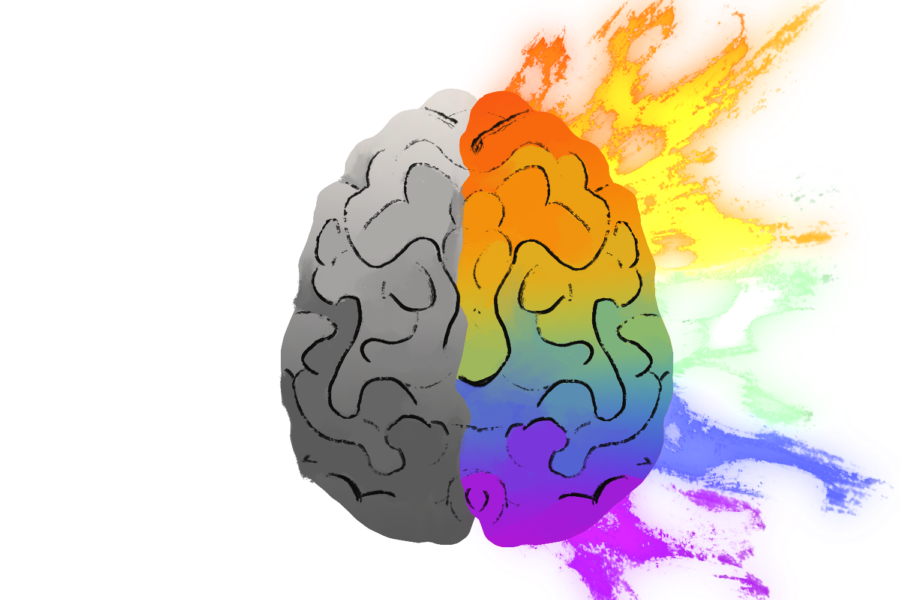Color on the brain
Different pigments impact emotions
Photo by Allyson Smith
Our relations to different colors effect our mood. Red often invokes feelings of anger, whereas green commonly promotes tranquility.
March 2, 2022
On a daily basis, we are surrounded by a vivid arrangement of colors such as pink, vermillion, shagreen, yellow, orange and the list goes on. For a millennium, scientists have been trying to understand the emotional and physical responses connected to certain colors.
Kurt Goldstein, a German scientist and neurologist asserts that certain colors produce systematic physiological reactions that manifest in emotional experiences.
Since our childhood, colors have been associated with emotions. In kindergarten, when I had a good day, I would get a green smiley face. If I had an OK day, I would get a yellow face. If I had a bad day, I would get a red face.
The same precedents still apply today. When I’m in my car, I know that green means it’s safe to move forward, yellow means slow and red means no.
We use colors as a nonverbal form of communication that our emotions respond to. For example, the color red is associated with negative memories and is commonly used as a warning color, as seen with sirens, stop signs, fire engines and blood. We’ve also coined terms such as “in the red” or “red flag.”
Studies suggest that students perform worse at the sight of the color red, and it causes an increase in heart rate and in adrenaline because, commonly, the color red signals danger.
Personally, I get panicky when I see my teacher has marked my paper in red ink, because it’s rarely good news when your paper is marked in red ink. In our minds, we automatically register the color red with negative emotions, but not all colors are tied to negative emotions.
The color green invokes calmness, peace and freshness. Researchers think our positive connection to the color green is due to evolution because it was a sign of nature, and that means there was food and running water in that area.
The color is also used as a symbol of confirmation, information, direction, security and prosperity. This is evident in the recycling symbol, state signs, money symbols and green check marks. We also use phrases like “green thumb” or “go green.”
Studies have also shown that the color of your bedroom is just as important as the color of stop signs. When choosing a color for your room, you should keep in mind what tone and emotional stimuli this color will produce.
According to researchers, pink is a good color to use in the office if you want to boost creativity and focus. If you want your living room to promote feelings of happiness, studies suggest the color yellow. If you want your child’s playroom to produce creativity, excitement and activity, studies suggest the color orange.
Colors to use in your bedroom:
- Purple: Relaxation, wisdom, bravery and spiritual strength
- Brown: Isolation, security and strength
- Pastels: femininity, purity and motherhood
- Blue: the color of calmness and serenity
- Green: Relieves stress and is also associated with refreshment, peace, rest and security.
Colors are subjective and they mean what you allow them to mean. To someone else, certain colors entice feelings of frustration, doubt and fear, but for others it could awaken feelings of love, compassion and power.
















